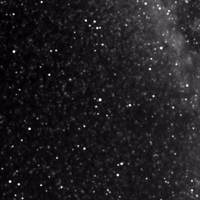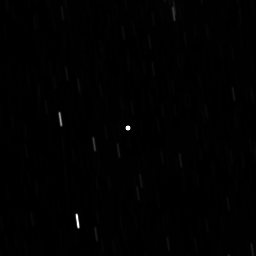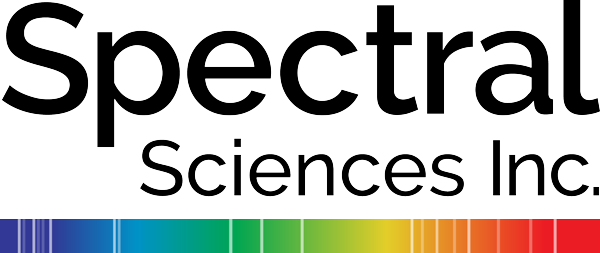This Air Force funded effort seeks to characterize deep space spacecraft maneuvers from the automated analysis of plumes detected in sensor imagery. The PODMAP algorithm combines SSI’s dynamic plume model, a detailed sensor scene model, and associated astrodynamics with our collaborator’s multiple-model estimation/particle filter scheme to derive maneuver characteristics and post-maneuver state vectors.
PODMAP includes deep space solar scattering models for the simulation of plume scenes in the visible and UV bands. The models are showcased in the accompanying animations. They depict a maneuvering LEO spacecraft as it approaches a ground-based observatory in a terminator pass (sensor in darkness, space vehicle in sunlight). In the top animation, the pre-maneuver spacecraft is tracked by a very wide field-of-view (40×40 deg) visible band imager. The simulation takes night sky backgrounds fully into account and includes a bright area of the Milky Way. The accelerating angular velocity of the background in the tracked field reflects the declining distance of the target. In the simulation at bottom, we improved the resolution ten-fold and extended the camera integration time to better highlight the star angular motion. In this narrower field-of-view, the loss in track after the maneuver becomes apparent as the target point object drifts from the frame center. This type of calculation is used to produce synthetic data to test the PODMAP algorithm, and to compare to real observations in order to validate the plume models.


